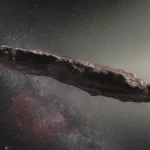Key Takeaways:
- There may be up to 6 billion Earth-like planets in our Milky Way galaxy.
- This conclusion was based on data from NASA’s Kepler mission.
- Scientists looked for rocky planets similar in size to Earth orbiting Sun-like stars within the habitable zone.
- The study suggests there might be fewer than six billion Earth-like planets in our galaxy than stars.
- This new estimate increases the chances of similar planets existing elsewhere in our galaxy.
Maybe you think one Earth is enough. Let’s say there were billions, though. According to a recent estimate by researchers, there may be as many as 6 billion Earth-like planets in our Milky Way galaxy.
Astronomers at the University of British Columbia (UBC) came to the astounding conclusion after analyzing data from NASA’s Kepler mission. The mission’s planet-hunting spacecraft gathered data on 200,000 stars.
The scientists’ selection criteria for such a planet stipulated that it needed to be rocky, roughly the same size as Earth, and orbit a star similar to our Sun. This planet also had to be in the habitable zone of its star, where the conditions would be just right to potentially allow for water and life.
Co-author of the new study Michelle Kunimoto of UBC, who has previously found 17 new planets outside of our solar system, stated that their calculations “place an upper limit of 0.18 Earth-like planets per G-type star.” That is, roughly, five planets for every Sun.
The study’s co-author UBC astronomer Jaymie Matthews put this from another perspective, explaining that “Our Milky Way has as many as 400 billion stars, with seven per cent of them being G-type. This implies that there might be fewer than six billion Earth-like planets in our galaxy than stars.
Kunimoto overcame the challenge of finding Earth-like planets because they are small and orbit far from their star by using a method called “forward modelling” to conduct the study.
“I started by simulating the full population of exoplanets around the stars Kepler searched,” expounded the researcher in UBC’s press release. Using my planet search algorithm, I classified each planet as either ‘detected’ or ‘missed,’ based on the likelihood that it would have been discovered. I then contrasted the planets that were found with my real planet catalog. The initial population was probably a decent representation of the actual population of planets orbiting those stars if the simulation produced a close match.
Even though the scientists identified an astounding number of potential Earths, it’s unlikely that this represents the total number of such planets or whether life exists there on a par with that of Earth. However, there is a greater chance that similar planets exist now that this new estimate has been made.
Check out the new study in The Astronomical Journal.


